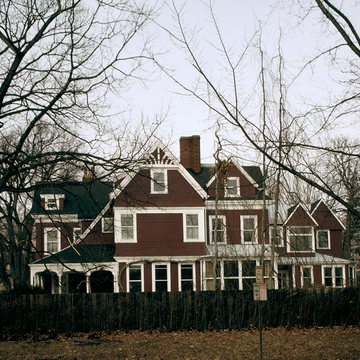In partnership with William Robert Ware, Henry Van Brunt designed some of the most seminal buildings in Boston and Cambridge during the 1860s and 1870s. For his own house, Van Brunt explored the picturesque massing and textural richness derived from the Queen Anne movement in Britain, seen in the varied gables and dormers and patterned shingle walls. A translator of the writings of French rationalist architect Eugène Viollet-le-Duc, Van Brunt incorporated an attention to structure in the turned posts of the porch and the paired windows wrapping the second-floor corners. Van Brunt did not enjoy the house for long. After ending his partnership with Ware in 1881, he formed Van Brunt and Howe, which he relocated to Kansas City in 1886.
You are here
Henry Van Brunt House
If SAH Archipedia has been useful to you, please consider supporting it.
SAH Archipedia tells the story of the United States through its buildings, landscapes, and cities. This freely available resource empowers the public with authoritative knowledge that deepens their understanding and appreciation of the built environment. But the Society of Architectural Historians, which created SAH Archipedia with University of Virginia Press, needs your support to maintain the high-caliber research, writing, photography, cartography, editing, design, and programming that make SAH Archipedia a trusted online resource available to all who value the history of place, heritage tourism, and learning.















